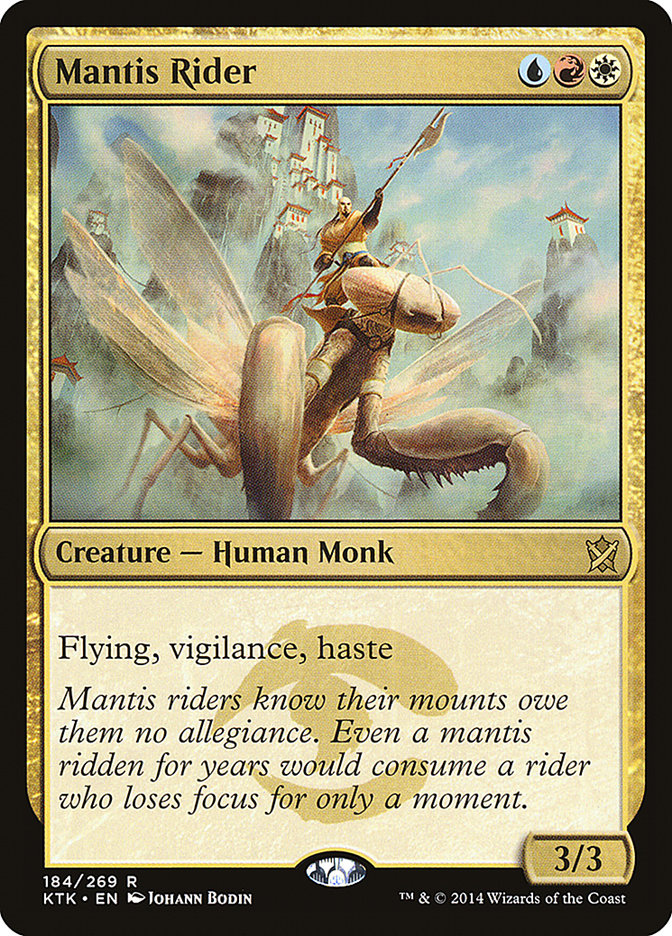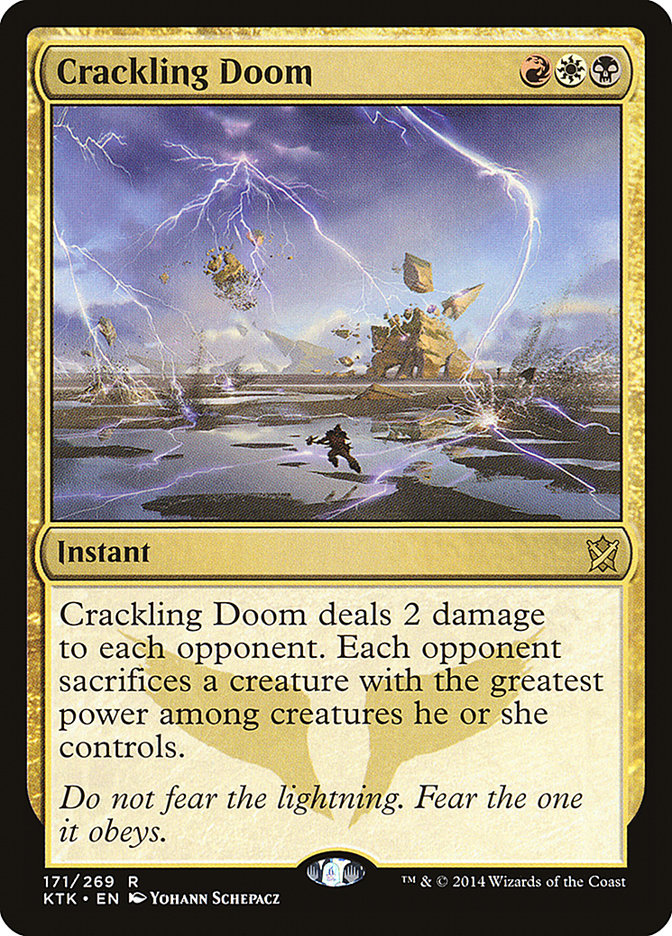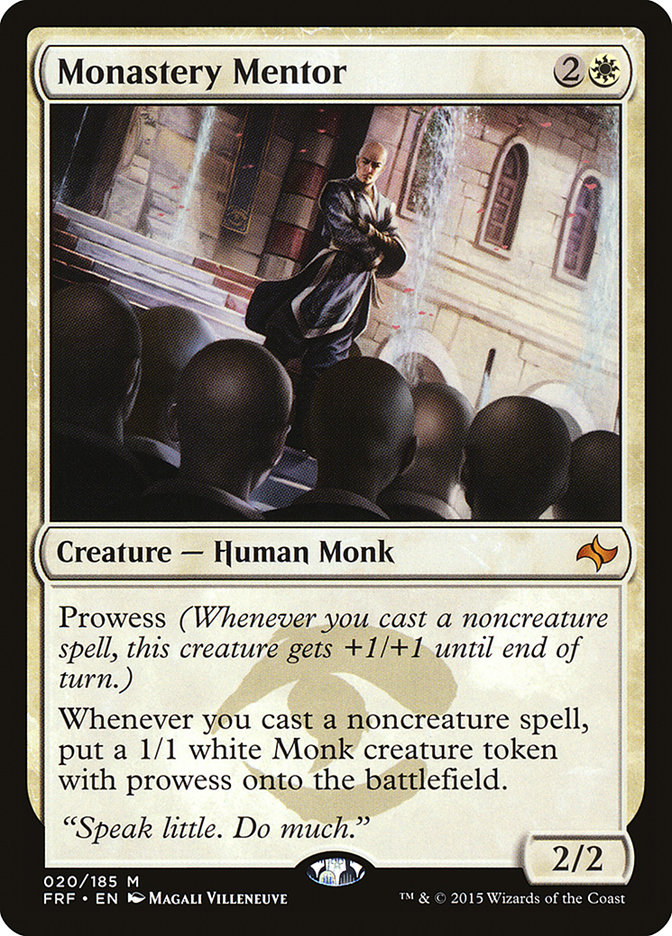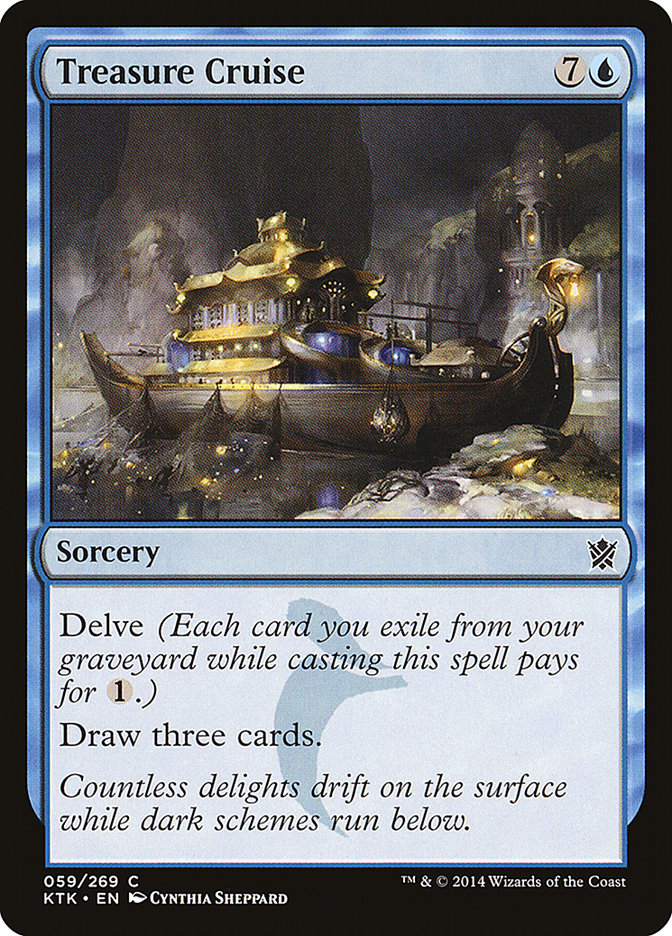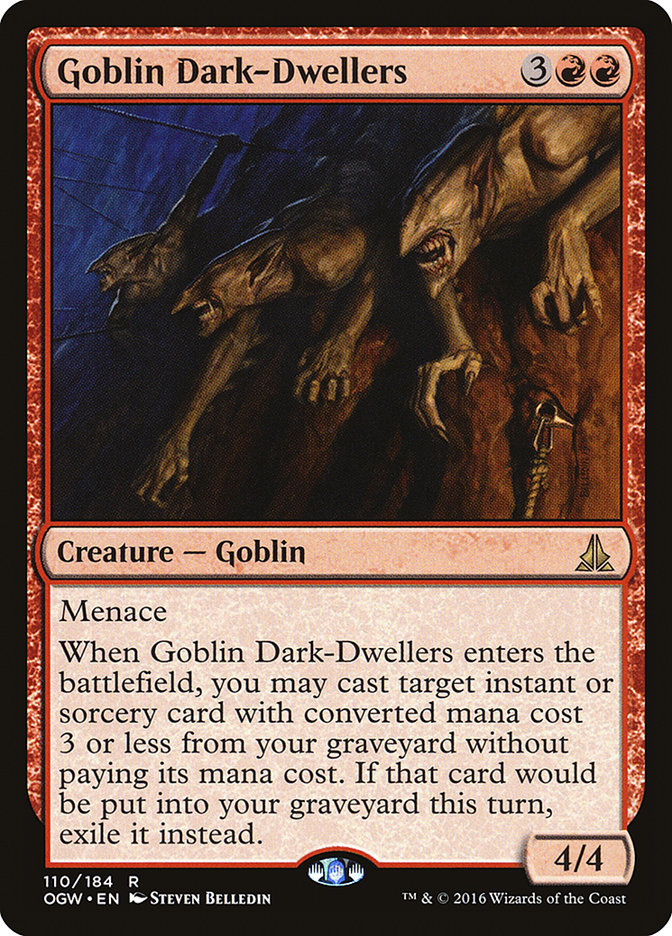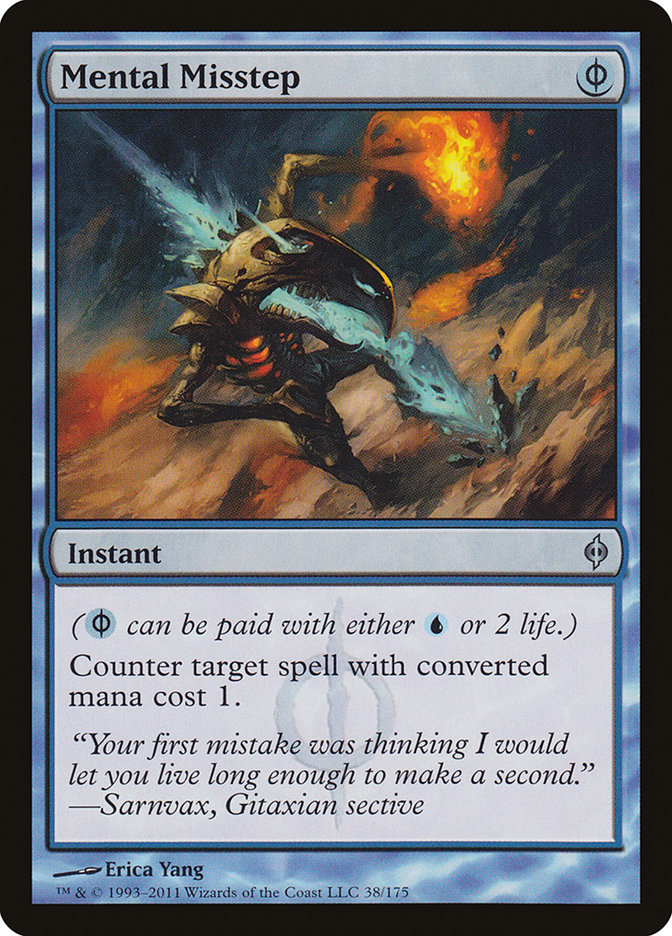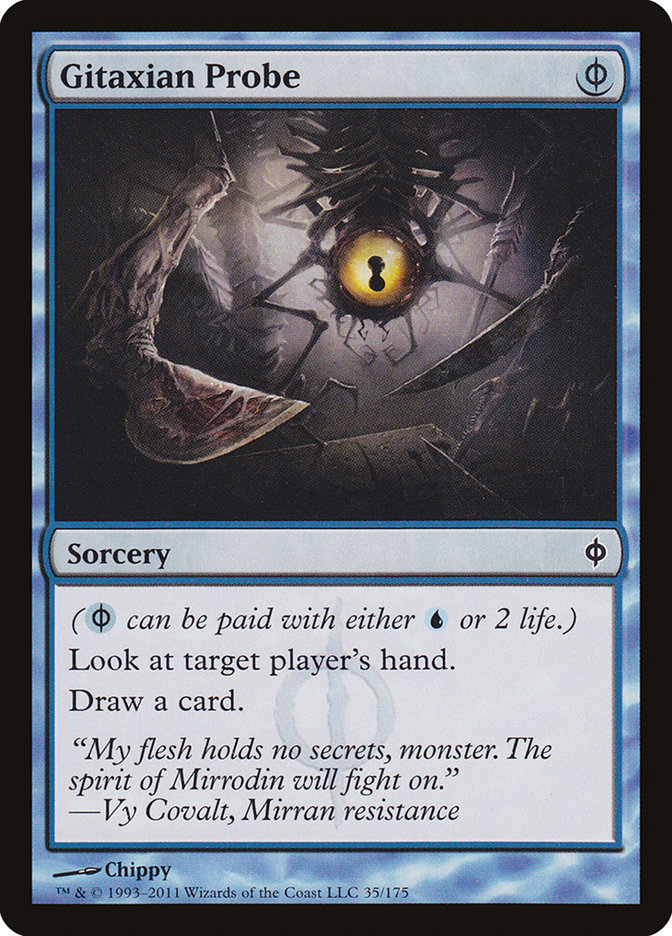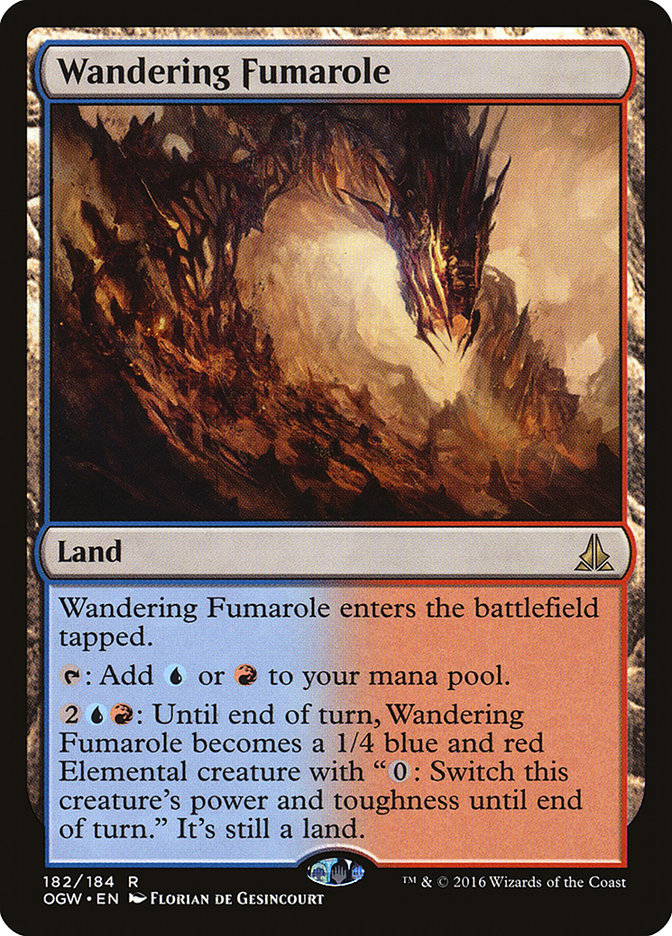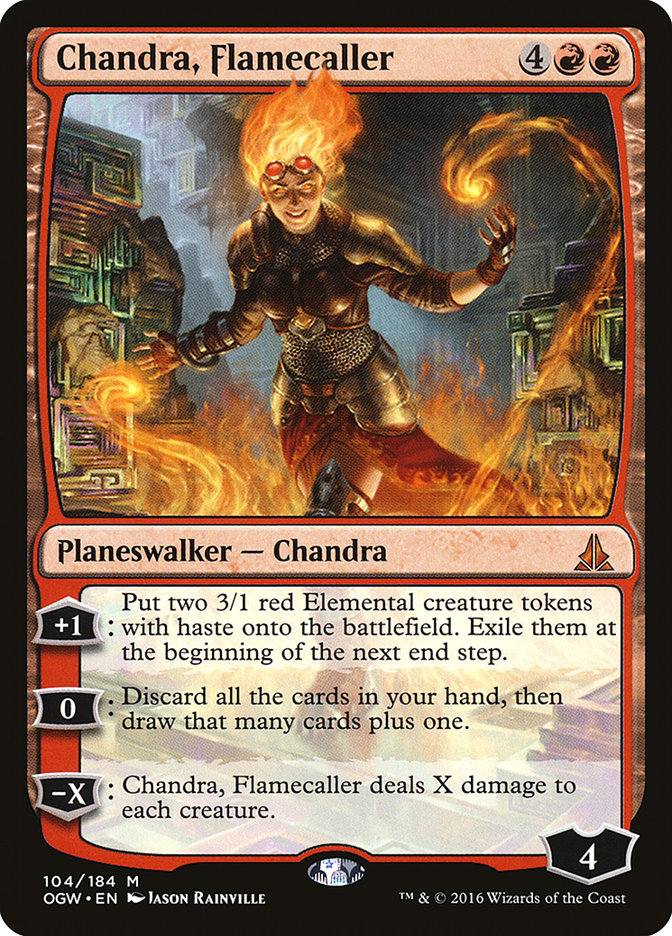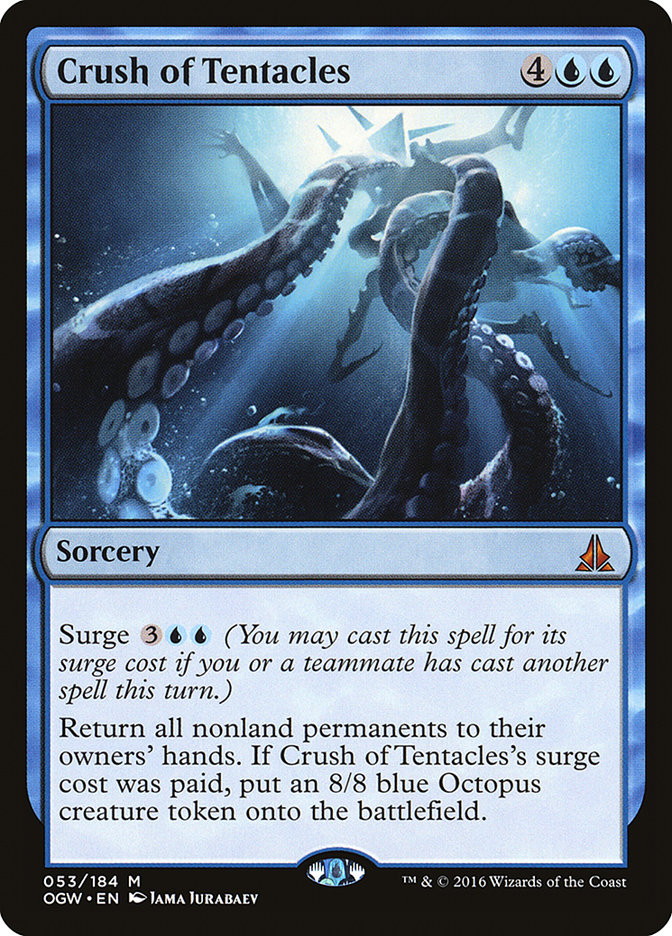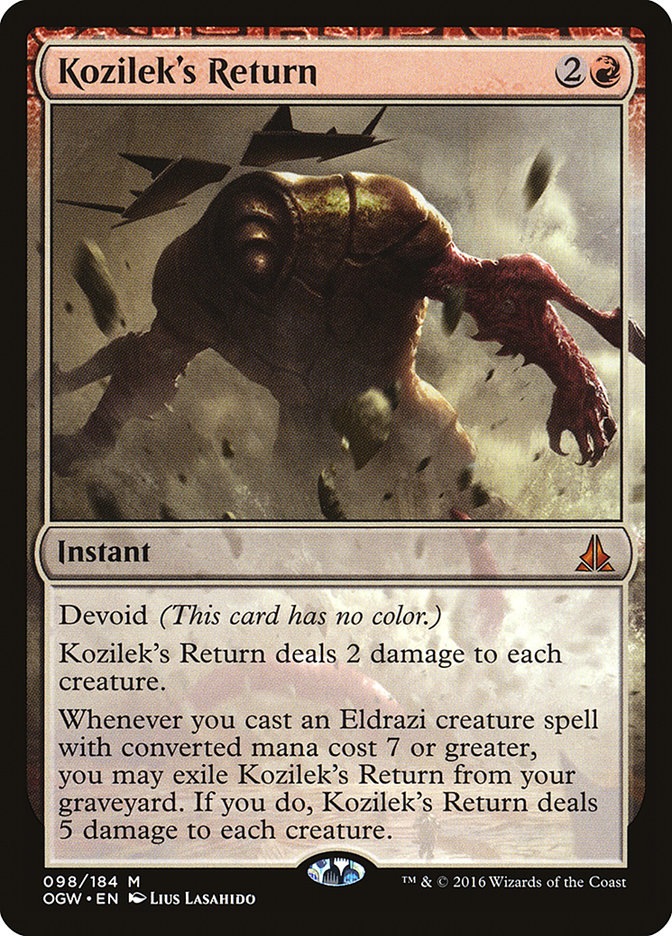This weekend, The SCG Tour® comes to #SCGATL for the first Standard Open featuring Oath of the Gatewatch. I, for one, am excited about the event, and you should be too. The next two weekends will feature Standard Opens with the new set, Atlanta and Columbus, and will be the major spotlight on how the cards from the new set influence the metagame. There has been a lot of talk about a few specific cards, but I think this set will end up surprising us much like Battle for Zendikar. So many spells, creatures, and lands that are tough to evaluate will need a guiding hand to teach us exactly what they can do. Others are a bit more brute-force on power level and will make the jump into competitive play almost immediately.
This week, I’ll be talking about the deck I want to play and how some of the other new cards in the set will influence how I build that deck.
A Brief History of Jeskai Black
I’m not sure how many of you actually want me to write another piece on Jeskai Black. On one hand, it is starting to get a little repetitive. On the other hand, I have gotten more questions on this archetype than any I’ve played in recent memory, as well as a lot of talk on how people think the deck will change over time. The biggest leap was the original exclusion of Mantis Rider, and why.
Never in my life have I been criticized so much for taking a “stock” card out of a deck. This sacred cow leads to a lot of free wins, but I don’t think it is what the controlling version of Jeskai Black actually wants. Even now, after months of success without it, I still get questions and comments as to why I’m not playing Mantis Rider in Jeskai Black, usually accompanied by a few reasons why they think it should still have a spot.
Time and again I’ve beaten the same dead horse: Jeskai Black is a control deck. You want cards that can gain control of the game, and after that you could literally win with a peanut butter sandwich. I’ve won countless games with just a Soulfire Grand Master or Jace ultimate after having my main win condition, Dragonmaster Outcast, exiled by an Utter End or something. You don’t need to be flashy. Once you have established control and gotten so far ahead on resources, you have a number of spells (or lands) that can close the game.
The downside to having such a puny win condition was that your deck didn’t have sufficient ways to pressure Gideon, Ally of Zendikar. That was one of the major reasons it was so tough to cut Mantis Rider. Alongside a Crackling Doom or Wild Slash, Mantis Rider could take down an opposing Gideon while also bricking off their tokens. Over time, I realized that Abzan (and Gideon in general) had enough of a presence that it would be foolish to think I could contain Gideon with some counterspells. On top of that, cards like Den Protector could bring it back, meaning that I would likely have to beat the same Gideon more than once, let alone the subsequent Gideons off the top of their library.
Enter Monastery Mentor.
At the #SCGINVI last year in Las Vegas, I sat wide awake in the wee hours of the morning before the tournament began. I had already decided that the best course of action against Abzan Aggro was solid removal alongside the sideboarded copies of Monastery Mentor. But there I sat, at three in the morning, wondering why Monastery Mentor wasn’t in my maindeck. And for the life of me, I couldn’t figure out a reason.
Monastery Mentor gave you so much play against a number of strategies that might normally be tough to beat. When you slam Monastery Mentor and a Duress on turn 4 when your opponent is tapped out, it is devastating. And if you ever get to untap with a Mentor in play, your odds of winning increase dramatically. If you’ve played with this version of Jeskai Black, you know just how good Monastery Mentor can be, and the rest of the deck starts to make perfect sense. It isn’t exactly a controlling card, but it is the perfect win condition for the deck.
In a lot of ways, Jeskai Black plays like a Modern deck. In all honesty, I’ve considered trying to port it to Modern, Soulfire Grand Masters and all, but the Modern version is likely worse than the Standard version because both Treasure Cruise and Dig Through Time are banned. But what Jeskai Black does that many Modern decks also do is reward you for knowing every single line the deck can take. At this point, it has been quite a while since I’ve come across a play I’ve never made before, including making myself discard a card with Kolaghan’s Command so that my Treasure Cruise is a bit cheaper in the future.
Much like Bant Heroic last season, Jeskai Black is not a deck you can just pick up and be a master with. It needs a soft hand and a warm touch to really get a feel for it. There are so many small decisions to make every single turn that it can be overwhelming. One of the biggest complaints I’ve gotten with various iterations of Jeskai Black is that it gets too many unintentional draws. I wouldn’t disagree with you, because I’ve definitely made versions that took a very long time to win, but I always write about those versions with a warning of caution. If you can’t play the archetype fast, then you probably should just jam Mantis Rider and hope for the best.
It is an acquired taste, to be sure. In some cases, you are so far ahead that what you do doesn’t actually matter, so long as you do it quickly. Kill their creatures, draw cards, play your own creatures. It really is as simple as that. If you play the deck enough before going into a major tournament with it, you will find the lines with ease, saving yourself precious time as the round clock winds down.
Moving forward, getting unintentional draws will be a bit more difficult, assuming certain goodies from Oath of the Gatewatch have anything to say about it.
The Future of Jeskai Black
Two cards really stand out to me as additions that won’t be hard to fit into the archetype. One is a hard-hitting Snapcaster Mage variant, while the other is a creature-land that does a great job at pressuring planeswalkers, which is normally where this style of deck starts to falter. Let’s start with the former.
While the similarities between Snapcaster Mage and Goblin Dark-Dwellers might seem easy to spot, it is the differences we need to examine when figuring out how good this card might be. Snapcaster Mage was great when it was in Standard, both alongside Phyrexian-mana spells like Gitaxian Probe and potent removal from Return to Ravnica.
When Snapcaster Mage was in Standard U/W Delver, it was almost always the best possible draw. It provided a clock while giving you some marginal card advantage, but also acted as a catch-all spell depending on what instants and sorceries you had already cast. In this deck, Snapcaster Mage was primarily a tempo card, since U/W Delver was able to make the 2/1 body a relevant threat when combined with Vapor Snag and the like.
In U/W Delver, Snapcaster Mage gave you options aplenty on virtually every turn after the first one. Free spells were a normal part of that Standard format, featuring Gut Shot, Gitaxian Probe, and Mental Misstep as potential targets to flash back on turn 2. It wasn’t until the rotation of New Phyrexia that we started to evaluate Snapcaster Mage properly.
When paired with Searing Spear, Mizzium Mortars, and Azorius Charm, Snapcaster Mage was no longer a reliable two- or three-mana spell. In essence, Snapcaster Mage’s average cost will increase with the average cost of your deck. It didn’t necessarily have to be a tempo card, and you didn’t need Delver of Secrets to make the body relevant. Goblin Dark-Dwellers looks to be a creature similar to Snapcaster Mage from this era, with a significantly bigger body and a bit of evasion. If we are to compare the two cards, it is important to note that Snapcaster Mage’s cost fluctuated, making it a bit more versatile. Flash was also fantastic, because it allowed you to rebuy stuff like Mana Leak. Where Snapcaster Mage was a sharp knife, capable of maneuvering delicately through a given situation, Goblin Dark-Dwellers will be a big, blunt hammer.
Goblin Dark-Dwellers is only as good as the spells surrounding it, and the current Standard format is flush with options. While it doesn’t pair well with the converge mechanic cards like Painful Truths and Radiant Flames, it will usually have a few good targets when you cast it. While Goblin Dark-Dwellers might not always be the best topdeck possible past turn 5, so far in testing it has more than proven just how insane it can be.
But the true power of Goblin Dark-Dwellers in this format is how nicely it pairs with Kolaghan’s Command. The ability to recycle Goblin Dark-Dwellers over and over will be hell on any deck trying to run you out of resources. The sheer value presented by this combination alone has me giddy. Much like Snapcaster Mage and Kolaghan’s Command in Modern, it will take a lot of time and effort to stop this engine once it gets going.
But Goblin Dark-Dwellers also gives you a solid threat. It doesn’t die to Fiery Impulse or Kolaghan’s Command and it has a form of evasion in menace. The fact that your opponent can’t reasonably cast Gideon, Ally of Zendikar when this card is in play is a sheer delight. But where Goblin Dark-Dwellers exceeds my expectations on power level, it doesn’t flow with the rest of the deck quite how I would want it to.
As I mentioned above, it is no Snapcaster Mage. It doesn’t have the same flexibility and may get stuck in your hand from time to time. The upside is that, even if you miss a land drop, Goblin Dark-Dwellers is a big tempo play that can catch you back up in a hurry. And on the other side of that coin, a Goblin Dark-Dwellers on curve while hitting a removal spell could be lights out if your opponent is already on the defensive. In a deck like Jeskai Black, that won’t happen too often, but it is certainly a threat out of a midrange or aggressive Mardu deck.
Where Goblin Dark-Dwellers gives the deck a bit more raw power, Wandering Fumarole is a big support card. It is widely known that Island is the worst card in Jeskai Black, since it doesn’t help you cast Crackling Doom. Most curves involve fetching Sunken Hollow on the first turn so that you can cast Jace, Vryn’s Prodigy on the second turn without screwing up your colors. Shambling Vent doesn’t really help this problem, and actually hurts it most of the time. You still don’t want to fetch Island under any circumstance, but it is a necessary evil. Wandering Fumarole eases the stress of the manabase a lot, lowering the times where you have to fetch Island over another basic land.
On top of that, Wandering Fumarole is a land that can attack for four. While it is likely worse than Celestial Colonnade or Raging Ravine, it does just so happen to tap for the best color pair on the planet. I would likely still play it if all it did was turn into a 1/1 for (3UR). The cost on Wandering Fumarole is not cheap. It will change the texture of how certain games play out and how you use your mana each turn. The difference in cost between Wandering Fumarole and Shambling Vent is relevant, as is the lifelink and potential to challenge a pair of 2/2 creatures.
In light of all those facts, I think Wandering Fumarole will end up being the best creature-land in this new bunch. Attacking for four points of damage is a big game, but it can also do some light blocking without getting max-punished by something like Draconic Roar. Four toughness is quite a bit, and being able to flip it into a razor-sharp attacker when the time calls for it is quite good.
Other than the two cards I covered above, there are a few stragglers from Oath of the Gatewatch that could make the cut in Jeskai Black, though it will be a bit harder for them to punch through. Kalitas, Traitor of Ghet could be phenomenal in theory, acting as a slightly bigger Monastery Mentor that only triggers from killing opposing creatures, but the double black mana requirement is a bit much. I will say that the lifelink and huge toughness are quite appealing, but I don’t know if it would be better than something like Pia and Kiran Nalaar.
Chandra, Flamecaller, on the other hand, looks utterly busted from every standpoint. With decks that play Treasure Cruise and Painful Truths, there will be plenty of games where you have a few too many lands stuck in your hand. I will say that the “0:” ability is strong, but not nearly as powerful as the other two. I wouldn’t understimate attacking your opponent, or their planeswalkers, for six damage per turn. On top of that, her ability to clean up the board aside from some Siege Rhinos or Tasigurs is fairly busted. I think that this Chandra will see a lot of play in Standard, and it feels right at home in a grindy control deck.
Crush of Tentacles seems sweet, but likely not what this deck wants to be doing. An 8/8 is nothing to sneeze at, but you need to be able to capitalize on the Upheaval effect. Jeskai Black might make use of the card in time with one or two copies, but I think Crush of Tentacles is better off in a deck built around it.
Linvala, the Preserver is pretty busted in general, but I think it will be less powerful in a deck that is built to gain a reasonable amount of life. The upside here is that Jeskai Black puts Painful Truths to the test, and losing that life can sometimes come back to haunt you. Linvala, the Preserver, like Crush of Tentacles, feels like it would be much better suited for a deck that wants to be built around it. I could be wrong here, as Linvala has felt very good every time I’ve cast it so far, but I have yet to put it into Jeskai Black yet. A singleton would be fine, but it is competing in the same slot as Chandra, Flamecaller. A tough decision, as is often the case with swingy, expensive spells.
And last, Kozilek’s Return over Radiant Flames might be awesome, but I’m not positive. The number of three-toughness creatures in the format is pretty low, and the ability to cast it at instant speed is sweet. Double up on the fact that Goblin Dark-Dwellers can successfully cast it from the graveyard and I think it might have the advantage, even if we can’t trigger the added bonus. Instant-speed spells that do similar things as sorceries need to be tested, and what better time than in a trial by fire? With Reckless Bushwhacker in the mix in red decks, having your sweeper be instant-speed might be the difference between winning and losing the match.
***
At its core, Jeskai Black is a control deck, but a bit different from what we’re normally used to. We aren’t playing sweepers outside of Radiant Flames, and most of our removal is cheap in order to make our card-drawing spells better. In a lot of ways, Jeskai Black functions like Jeskai Flash decks of old, where we try to trade one-for-one on the small stuff, only to bury our opponents with Sphinx’s Revelation in the later turns. Unfortunately, the card draw spells we do have aren’t as good as Sphinx’s Revelation, but the gist remains the same.
The problem here is that every expensive card we add (Goblin Dark-Dwellers, Chandra, Linvala), we take away from the heart of what makes the deck great. It is important to find the balance between power and consistency, though a few heavy hitters never hurt anyone. And when those heavy hitters fit right into an existing gameplan, it is hard to say no.
Creatures (11)
Lands (26)
Spells (23)
- 3 Duress
- 4 Crackling Doom
- 1 Murderous Cut
- 2 Treasure Cruise
- 2 Roast
- 3 Kolaghan's Command
- 4 Fiery Impulse
- 1 Ruinous Path
- 3 Painful Truths
Sideboard

In all honesty, I’m not sure that this style of deck can ever beat a ramp deck. Infinite Obliteration is decent, but it starts to get much worse when the ramp decks diversify their threats with Kozilek, the Great Distortion and World Breaker. On top of that, playing a version of Jeskai Black that revolves around Monastery Mentor puts you in an awkward position against both sweeper effects (opposing Kozilek’s Return) and Ugin, the Spirit Dragon. Older versions of Jeskai Black could survive the long game, ultimately beating the opponent with a lone Soulfire Grand Master, but that’s because we could afford to keep the board mostly dry. I’m just going to try to dodge ramp and hope for the best.
Give or take a few cards, this is what I’m going to be playing this weekend at the Standard Open in Atlanta. I have a few more days to test out some theories and try to get the numbers right, but here’s a good start if Jeskai Black is a deck that interests you. Over time, we may find that Goblin Dark-Dwellers is just significantly better than anything else we could be doing, and Monastery Mentor’s time in the sun may come to an end. But until I can prove that Gideon is no longer a substantial threat, I’ll keep packing my Jacob Wilson tokens. If ramp decks are running rampant, I may make a last-minute audible to something else, but I have such a tough time putting this deck down. I hope I can take it for another ride and make another Top 8.


